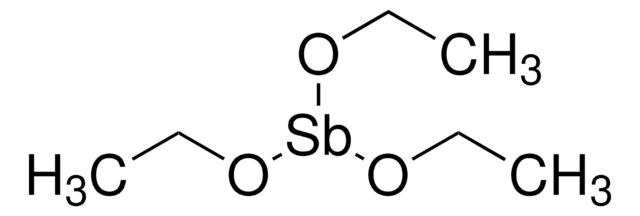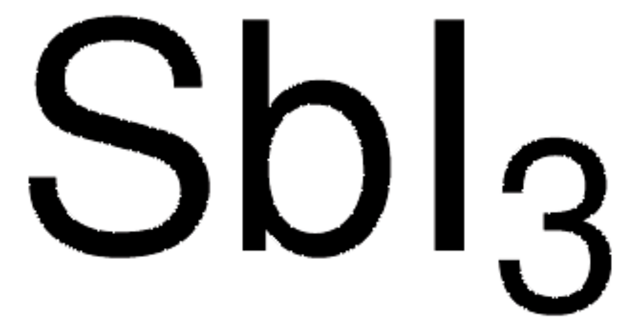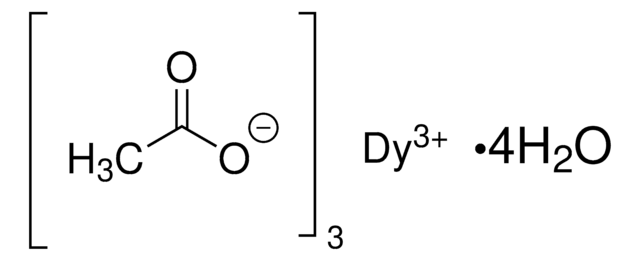483265
Antimony(III) acetate
99.99% trace metals basis
Sinónimos:
Antimony acetate, Antimony triacetate, Triacetoxystibine
About This Item
Productos recomendados
Ensayo
99.99% trace metals basis
Formulario
solid
idoneidad de la reacción
core: antimony
reagent type: catalyst
mp
126-131 °C (lit.)
densidad
1.22 g/mL at 25 °C (lit.)
cadena SMILES
CC(=O)O[Sb](OC(C)=O)OC(C)=O
InChI
1S/3C2H4O2.Sb/c3*1-2(3)4;/h3*1H3,(H,3,4);/q;;;+3/p-3
Clave InChI
JVLRYPRBKSMEBF-UHFFFAOYSA-K
Categorías relacionadas
Descripción general
Aplicación
- New Complexes of Antimony(III) with Tridentate O,E,O-Ligands: Explores new antimony(III) complexes providing insights into their bonding and potential applications in materials science (U Böhme, M Herbig, 2023).
- Antimony (III) acetate as a catalyst for synthesis of xanthenes: Details the use of antimony(III) acetate as a catalyst in the synthesis of biologically active compounds, showcasing its efficiency in organic chemistry (F Hakimi, A Hassanabadi, 2015).
Características y beneficios
- 99.99% trace metals basis (<150 ppm) ensures minimal contamination with consistent performance in critical applications, leading to better outcomes.
- Suitable catalyst to produce synthetic fibres. It is moderately soluble in water
- Suitable for solvent free reactions.
Palabra de señalización
Warning
Frases de peligro
Consejos de prudencia
Clasificaciones de peligro
Acute Tox. 4 Inhalation - Acute Tox. 4 Oral - Aquatic Chronic 2
Código de clase de almacenamiento
11 - Combustible Solids
Clase de riesgo para el agua (WGK)
WGK 2
Punto de inflamabilidad (°F)
Not applicable
Punto de inflamabilidad (°C)
Not applicable
Elija entre una de las versiones más recientes:
¿Ya tiene este producto?
Encuentre la documentación para los productos que ha comprado recientemente en la Biblioteca de documentos.
Los clientes también vieron
Nuestro equipo de científicos tiene experiencia en todas las áreas de investigación: Ciencias de la vida, Ciencia de los materiales, Síntesis química, Cromatografía, Analítica y muchas otras.
Póngase en contacto con el Servicio técnico










